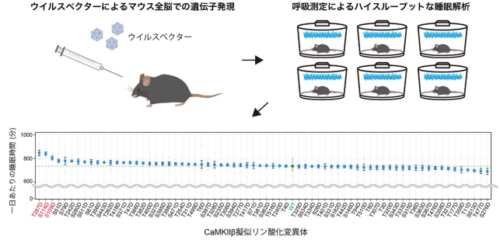2022-10-04 カリフォルニア大学サンディエゴ校(UCSD)
新しい発見は、10時間の食事時間内の時間制限食が実現可能であるだけでなく、消防士たちのVLDL、つまり「悪い」コレステロールを大幅に減らし、精神状態を改善し、アルコール摂取量を週当たりおよそ3杯減らすのに役立つことを決定した。
臨床試験では、サンディエゴ消防救助局の消防士150人が、携帯電話のmyCircadianClockアプリを使い、3ヶ月間、食事の記録をとった。半数のグループは10時間以内に食事をし、残りの半数(コントロールグループ)は何も変えずに14時間以内に食事をした。
この研究では、健康な人と、太り気味の人、高血圧、コレステロール、血糖値などの健康状態にある人の両方が対象となった。
この研究では、時間制限のある食事は、研究開始時に高値を示した消防士の血糖値と血圧も有意に改善することがわかりました。研究者らは、時間制限食は、心代謝系疾患やその他の慢性疾患のリスクを抱える人々にとって、さらに大きなメリットをもたらす可能性があると結論付けている。
<関連情報>
- https://today.ucsd.edu/story/study-time-restricted-eating-improves-cardiovascular-health-for-firefighters
- https://www.cell.com/cell-metabolism/fulltext/S1550-4131(22)00361-8
24時間勤務のシフトワーカーにおける時間制限食の実行可能性と心代謝系健康への影響:Healthy Heroes無作為化対照試験 Feasibility of time-restricted eating and impacts on cardiometabolic health in 24-h shift workers: The Healthy Heroes randomized control trial
Emily N.C. Manoogian,Adena Zadourian,Hannah C. Lo,Nikko R. Gutierrez,Azarin Shoghi,Ashley Rosander,Aryana Pazargadi,Cameron K. Ormiston,Xinran Wang,Jialu Sui,Zhaoyi Hou,Jason G. Fleischer,Shahrokh Golshan,Pam R. Taub,Satchidananda Panda
Cell Metabolism Published:OCTOBER 04, 2022
DOI:https://doi.org/10.1016/j.cmet.2022.08.018

Highlights
•10-h time-restricted eating is feasible for shift workers on a 24-h schedule
•TRE improved very-low-density lipoprotein size and quality of life measures
•TRE decreased HbA1c and blood pressure for participants with cardiometabolic risk
•A consistent 10-h eating window (TRE) had no adverse effects
Summary
Over a quarter of the workforce in industrialized countries does shift work, which increases the risk for cardiometabolic disease. Yet shift workers are often excluded from lifestyle intervention studies to reduce this risk. In a randomized control trial with 137 firefighters who work 24-h shifts (23–59 years old, 9% female), 12 weeks of 10-h time-restricted eating (TRE) was feasible, with TRE participants decreasing their eating window (baseline, mean 14.13 h, 95% CI 13.78–14.47 h; intervention, 11.13 h, 95% CI 10.73–11.54 h, p = 3.29E-17) with no adverse effects, and improved quality of life assessed via SF-36 (ClinicalTrials.gov: NCT03533023). Compared to the standard of care (SOC) arm, TRE significantly decreased VLDL particle size. In participants with elevated cardiometabolic risks at baseline, there were significant reductions in TRE compared to SOC in glycated hemoglobin A1C and diastolic blood pressure. For individuals working a 24-h shift schedule, TRE is feasible and can improve cardiometabolic health, especially for individuals with increased risk.

